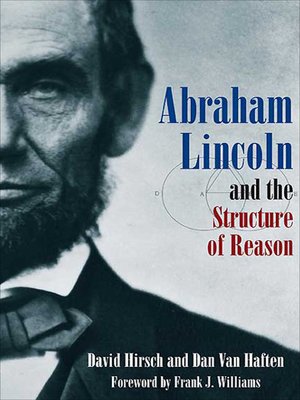
Sign up to save your library
With an OverDrive account, you can save your favorite libraries for at-a-glance information about availability. Find out more about OverDrive accounts.
Find this title in Libby, the library reading app by OverDrive.



Search for a digital library with this title
Title found at these libraries:
| Library Name | Distance |
|---|---|
| Loading... |
The secrets of one of history's greatest orators are revealed in "one of the most stunningly original works on Abraham Lincoln to appear in years" (John Stauffer, professor of English and history, Harvard University).
For more than 150 years, historians have speculated about what made Abraham Lincoln truly great. How did Lincoln create his compelling arguments, his convincing oratory, and his unforgettable writing? Some point to Lincoln's study of grammar, literature, and poetry. Others believe it was the deep national crisis that gave import to his words. Most agree that he honed his persuasive technique in his work as an Illinois attorney.
Here, the authors argue that it was Lincoln's in-depth study of geometry that made the president's verbal structure so effective. In fact, as the authors demonstrate, Lincoln embedded the ancient structure of geometric proof into the Gettysburg Address, the Cooper Union speech, the first and second inaugurals, his legal practice, and much of his substantive post-1853 communication.
Also included are Lincoln's preparatory notes and drafts of some of his most famous speeches as well as his revisions and personal thoughts on public speaking and grammar.
With in-depth research and provocative insight, Abraham Lincoln and the Structure of Reason "offers a whole new angle on Lincoln's brilliance" (James M. Cornelius, Curator, Lincoln Collection, Abraham Lincoln Presidential Library and Museum).
For more than 150 years, historians have speculated about what made Abraham Lincoln truly great. How did Lincoln create his compelling arguments, his convincing oratory, and his unforgettable writing? Some point to Lincoln's study of grammar, literature, and poetry. Others believe it was the deep national crisis that gave import to his words. Most agree that he honed his persuasive technique in his work as an Illinois attorney.
Here, the authors argue that it was Lincoln's in-depth study of geometry that made the president's verbal structure so effective. In fact, as the authors demonstrate, Lincoln embedded the ancient structure of geometric proof into the Gettysburg Address, the Cooper Union speech, the first and second inaugurals, his legal practice, and much of his substantive post-1853 communication.
Also included are Lincoln's preparatory notes and drafts of some of his most famous speeches as well as his revisions and personal thoughts on public speaking and grammar.
With in-depth research and provocative insight, Abraham Lincoln and the Structure of Reason "offers a whole new angle on Lincoln's brilliance" (James M. Cornelius, Curator, Lincoln Collection, Abraham Lincoln Presidential Library and Museum).







